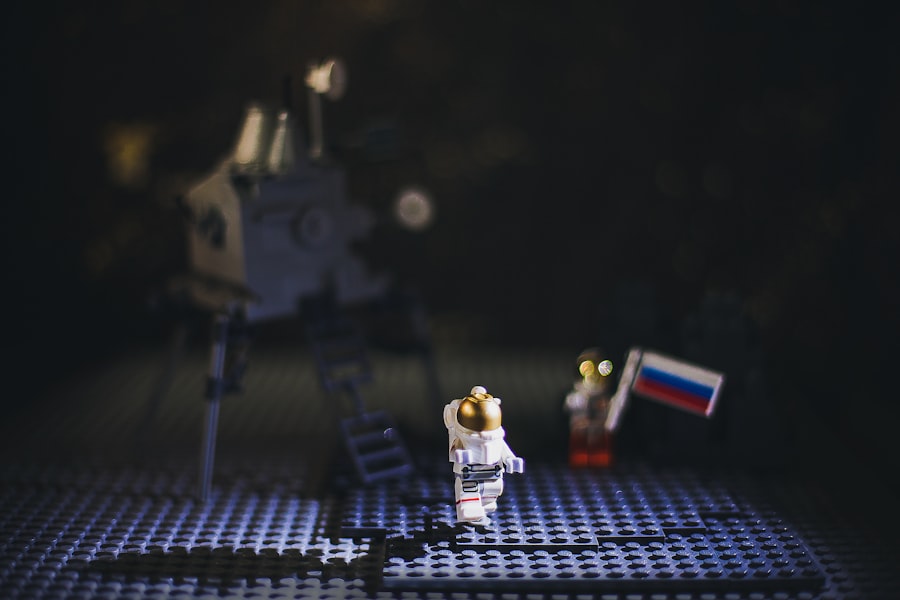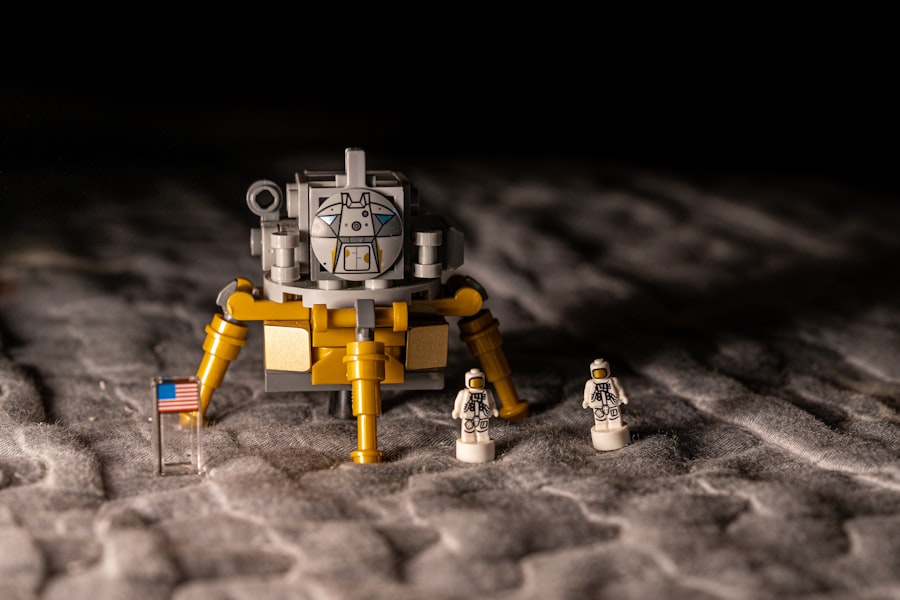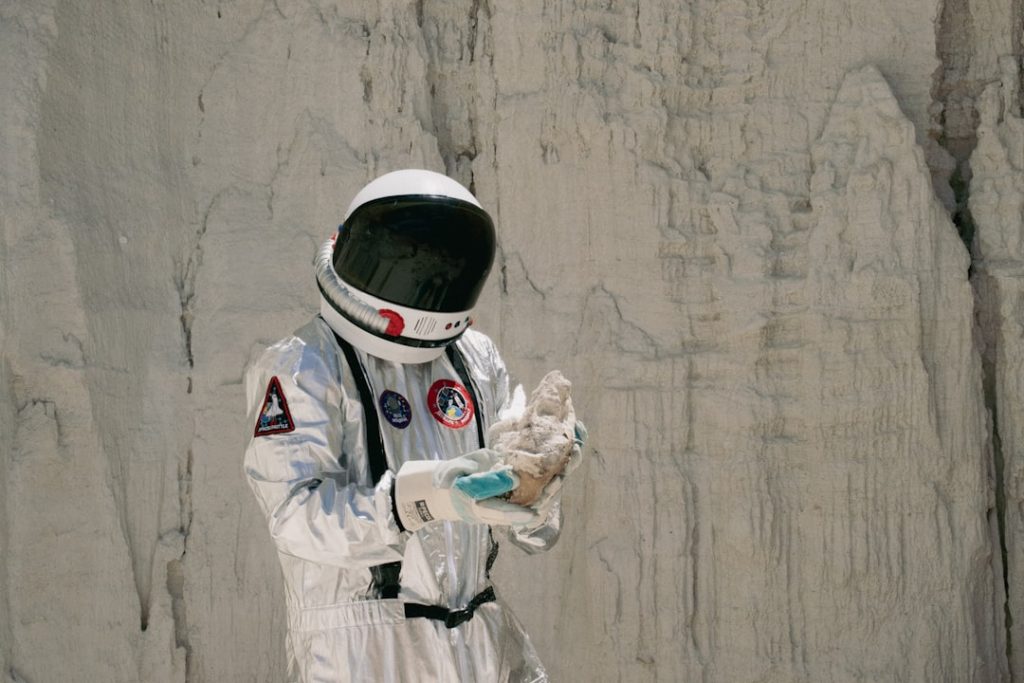The history of space exploration is a fascinating chronicle that spans centuries, beginning with humanity’s age-old fascination with the stars. Early civilizations, such as the Babylonians and Greeks, laid the groundwork for astronomical observation, developing rudimentary tools to track celestial bodies. However, it wasn’t until the 20th century that space exploration transitioned from mere observation to active exploration.
The launch of Sputnik 1 by the Soviet Union in 1957 marked a pivotal moment in this journey, as it became the first artificial satellite to orbit Earth. This event not only ignited the space race between the United States and the Soviet Union but also symbolized the dawn of a new era in human achievement. Following Sputnik, the 1960s witnessed a flurry of activity in space exploration.
The United States responded with its own satellite programs and eventually landed humans on the Moon with Apollo 11 in 1969. Neil Armstrong and Buzz Aldrin’s historic lunar walk represented not just a technological triumph but also a profound moment in human history, showcasing our ability to transcend earthly boundaries. The subsequent Apollo missions further expanded our understanding of the Moon and laid the groundwork for future explorations beyond our planet.
As the decades progressed, missions to Mars, Venus, and beyond began to take shape, driven by an insatiable curiosity about the universe and our place within it.
Key Takeaways
- Space exploration has a rich history dating back to ancient civilizations and has evolved significantly over time.
- Space scientists play a crucial role in expanding our understanding of the cosmos through research, observation, and analysis.
- Cutting-edge technology, such as advanced propulsion systems and robotics, is revolutionizing space exploration and enabling new discoveries.
- Space missions have led to groundbreaking discoveries and insights, including the existence of exoplanets and the composition of distant celestial bodies.
- Challenges in space exploration, such as radiation exposure and limited resources, continue to present obstacles for scientists and engineers.
The Role of Space Scientists in Understanding the Cosmos
Space scientists play a crucial role in unraveling the mysteries of the universe, employing a diverse array of disciplines including astrophysics, planetary science, and astrobiology. Their work involves formulating hypotheses, designing experiments, and analyzing data collected from various missions and telescopes. For instance, astrophysicists study cosmic phenomena such as black holes, neutron stars, and dark matter, seeking to understand the fundamental laws that govern the universe.
Their research often relies on advanced mathematical models and simulations to predict behaviors that cannot be directly observed. Moreover, planetary scientists focus on the composition and behavior of celestial bodies within our solar system and beyond. They analyze data from spacecraft missions like NASA’s Mars rovers or ESA’s Rosetta mission to Comet 67P/Churyumov-Gerasimenko.
By studying these bodies, scientists can glean insights into their formation and evolution, which in turn informs our understanding of Earth’s own geological history. Astrobiologists, on the other hand, explore the potential for life beyond Earth, investigating extreme environments on our planet as analogs for extraterrestrial habitats. Their interdisciplinary approach is vital for guiding future missions aimed at searching for signs of life on planets like Mars or moons such as Europa.
Cutting-Edge Technology in Space Exploration

The technological advancements that have propelled space exploration are nothing short of remarkable. From the early days of rudimentary rockets to today’s sophisticated spacecraft equipped with advanced sensors and artificial intelligence, technology has been at the forefront of our quest to explore the cosmos. One significant innovation is the development of reusable rocket technology, exemplified by SpaceX’s Falcon 9.
This breakthrough has drastically reduced launch costs and increased access to space, enabling more frequent missions and fostering a new era of commercial spaceflight. In addition to launch technology, advancements in imaging and communication have transformed our ability to gather data from distant celestial bodies. High-resolution cameras aboard spacecraft like the Hubble Space Telescope have provided breathtaking images of galaxies, nebulae, and other astronomical phenomena, allowing scientists to study their properties in unprecedented detail.
Furthermore, innovations in spectroscopy enable researchers to analyze the chemical composition of distant planets’ atmospheres, offering clues about their potential habitability. The integration of artificial intelligence into data analysis processes is also revolutionizing how scientists interpret vast amounts of information collected from space missions, making it possible to identify patterns and anomalies that would be difficult for humans to discern.
Discoveries and Insights from Space Missions
| Space Mission | Discoveries and Insights |
|---|---|
| Voyager 1 and 2 | Discovered active volcanoes on Jupiter’s moon Io |
| Cassini-Huygens | Discovered liquid methane lakes on Saturn’s moon Titan |
| Curiosity Rover | Discovered evidence of ancient water on Mars |
| Hubble Space Telescope | Discovered the expansion rate of the universe is accelerating |
Space missions have yielded a treasure trove of discoveries that have fundamentally altered our understanding of the universe. The Voyager spacecraft, launched in 1977, provided humanity with its first close-up images of Jupiter and Saturn, revealing complex atmospheric dynamics and intricate ring systems. Voyager 1’s journey into interstellar space has allowed scientists to study the heliosphere’s boundary and gain insights into cosmic rays beyond our solar system.
These findings have not only expanded our knowledge of planetary systems but have also raised questions about the nature of our solar neighborhood. Mars exploration has been particularly fruitful, with rovers like Curiosity and Perseverance uncovering evidence of ancient water flows and organic molecules on the Martian surface. These discoveries suggest that Mars may have once harbored conditions suitable for life, igniting interest in future manned missions to explore its potential for habitability further.
Additionally, missions like the Kepler Space Telescope have revolutionized our understanding of exoplanets—planets orbiting stars outside our solar system—by identifying thousands of candidates and providing insights into their sizes and distances from their host stars. This burgeoning field has opened up new avenues for exploring the possibility of life beyond Earth.
Challenges and Limitations in Exploring the Cosmos
Despite remarkable progress in space exploration, numerous challenges persist that hinder our ability to fully understand the cosmos. One significant challenge is the vast distances involved; even our closest neighboring star system, Alpha Centauri, is over four light-years away. Current propulsion technologies limit our ability to reach these distant destinations within a human lifetime.
The development of faster propulsion methods, such as ion drives or theoretical concepts like warp drives, remains an area of active research but is still far from realization. Additionally, space missions are fraught with technical challenges that can jeopardize their success. For example, spacecraft must endure extreme temperatures, radiation levels, and micrometeoroid impacts during their journeys through space.
The failure of critical systems can lead to mission loss or compromised data collection. Moreover, funding constraints often limit the scope of ambitious projects; many proposed missions are shelved due to budgetary considerations or shifting political priorities. These limitations necessitate innovative solutions and international collaboration to push the boundaries of what is possible in space exploration.
The Future of Space Exploration

Looking ahead, the future of space exploration is poised for exciting developments driven by both governmental agencies and private enterprises. NASA’s Artemis program aims to return humans to the Moon by 2024 as a stepping stone for future manned missions to Mars. This initiative not only seeks to establish a sustainable human presence on the Moon but also aims to test technologies that will be crucial for long-duration space travel.
The lunar Gateway—a planned space station orbiting the Moon—will serve as a hub for scientific research and exploration activities. Simultaneously, private companies like SpaceX are pushing boundaries with ambitious plans for interplanetary travel. Elon Musk’s vision for colonizing Mars involves developing the Starship spacecraft capable of carrying large numbers of people and cargo to the Red Planet.
This endeavor reflects a growing trend toward commercial involvement in space exploration, which could lead to increased innovation and reduced costs through competition. As technology continues to advance at an unprecedented pace, we may soon witness breakthroughs that enable humanity to explore deeper into our solar system and beyond.
Collaboration and Cooperation in Space Research
Collaboration has become an essential aspect of modern space exploration as nations recognize that many challenges are best addressed through cooperative efforts. The International Space Station (ISS) serves as a prime example of successful international collaboration in space research. Jointly operated by NASA, Roscosmos (Russia), ESA (European Space Agency), JAXA (Japan), and CSA (Canada), the ISS has facilitated groundbreaking scientific research across various disciplines while fostering peaceful relations among participating countries.
Moreover, international partnerships extend beyond low Earth orbit missions; collaborative efforts are evident in ambitious projects like the James Webb Space Telescope (JWST). This telescope represents a joint venture between NASA, ESA, and the Canadian Space Agency (CSA), combining resources and expertise from multiple nations to create a powerful tool for exploring the universe’s earliest galaxies and studying exoplanets’ atmospheres. Such collaborations not only enhance scientific output but also promote knowledge sharing and capacity building among nations.
The Impact of Space Exploration on Society
The impact of space exploration extends far beyond scientific discovery; it has profound implications for society as a whole. Technological advancements derived from space research have led to innovations that permeate everyday life—ranging from satellite communications and GPS technology to advancements in materials science and medical imaging techniques. These applications demonstrate how investments in space exploration can yield tangible benefits for humanity.
Furthermore, space exploration inspires generations by igniting curiosity about science and technology among young people worldwide. Programs aimed at engaging students in STEM (science, technology, engineering, mathematics) fields often draw upon themes from space exploration to foster interest in these disciplines. The iconic images captured by telescopes like Hubble or missions like Mars Rover serve as powerful motivators for aspiring scientists and engineers who envision contributing to humanity’s quest for knowledge about the universe.
In conclusion, while this article has explored various facets of space exploration—from its rich history to its future potential—the journey into the cosmos remains an ongoing saga filled with challenges and triumphs that continue to shape our understanding of existence itself.


